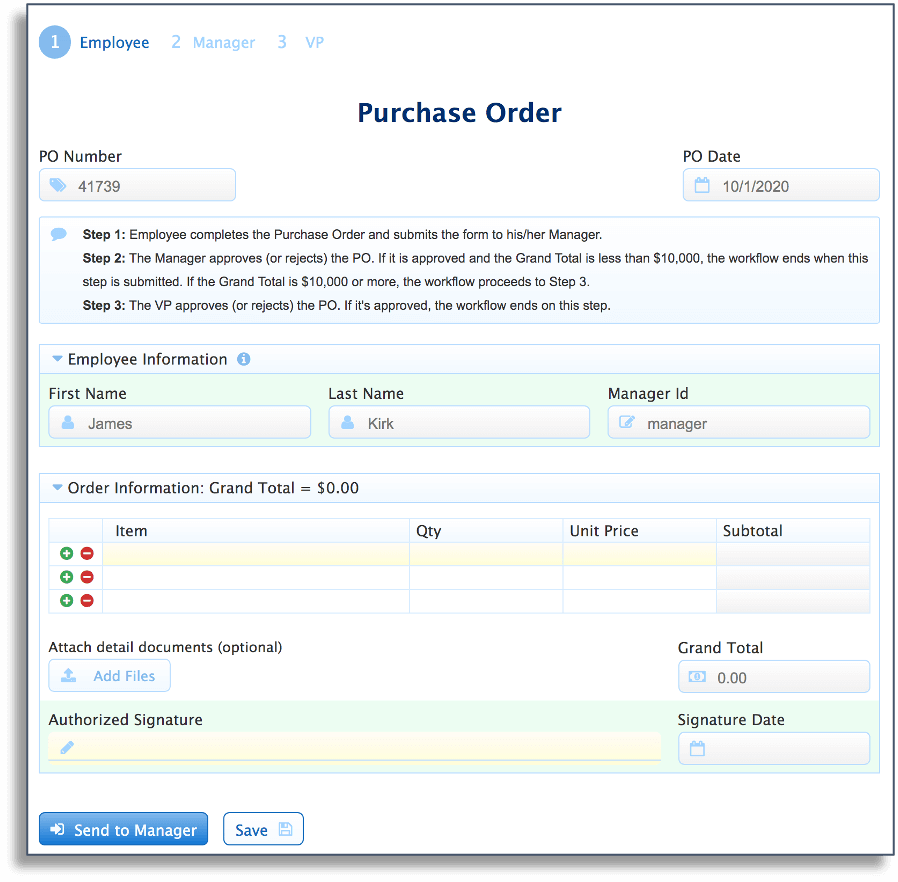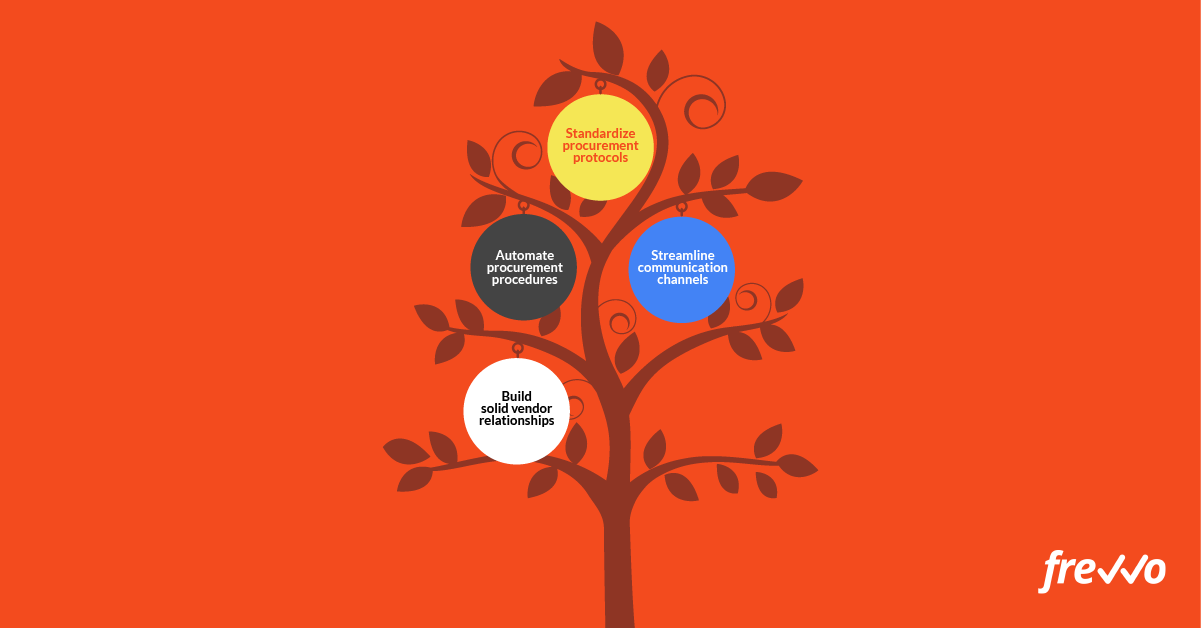In life or in business, risk-taking has benefits and may even be an essential ingredient of success.
Quite the opposite when it comes to procurement – the last thing you want is risk.
A smoothly-functioning procurement process means standardized, reliable relationships with vendors, your team, and your customers.
Ultimately, by understanding and managing procurement risks, you can streamline procurement procedures to manage and reduce them.
In this article we’ll give you a breakdown of the leading procurement risks and how you can manage them effectively.
Why is it so important to manage procurement risks?

When procuring goods and services for your business, you must consider the risks attached at every stage.
From unreliable vendors to late deliveries, the risks of poor procurement are diverse.
For starters, mistakes and delays in the procurement process can lead to wasted hours chasing documentation or remedying errors.
Looking at the sheer volume of potential procurement risk factors, it’s clear you need to approach supply chain risk management from the outset.
To manage risks from the beginning, companies should employ effective forecasting methods.
For 30% of retailers and manufacturers, forecasting future needs is their biggest challenge. This isn’t surprising, considering that 86% don’t have analytical systems which would allow them to analyze past needs to anticipate future requirements.
The problem is that without sophisticated forecasting and procurement planning, you’ll struggle to understand when and what you need to order.
To streamline risk assessment processes and risk management solutions in 2020, it’s essential you establish a firm technological grounding.
With procurement technology, you’ll be able to monitor all stages of the procurement process to help identify bottlenecks as they occur. This prevents risks from blossoming into catastrophes.
Right now, two-thirds of retailers complain that supply chain technology doesn’t help them much beyond daily tasks.
To manage potential risks effectively, implement procurement technology that helps you forecast for the future as well as monitor each stage of the procurement process in depth.
That’s how High Hopes Therapeutic Riding streamlines its supply chain risk management procedures.

By migrating from a paper risk management process to frevvo’s paperless workflow automation software, High Hopes solved this issue of missing data and incorrect risk reporting.
Now, thanks to a clear digital audit trail, it’s easy for the Program Director to consistently oversee the processes, to prevent risks from evolving into problems.
The 7 most common procurement risks

Procurement can be challenging, especially with so many potential risks littered along the supply chain.
Luckily, with a little forethought, your procurement team can plan ways to manage the risks within your procurement system.
Here are some of the most common procurement risks that you should keep an eye on.
#1 – Inaccurate internal needs analysis

When a department or business unit identifies the need for a product or service, it kicks off the procurement process.
At this stage, the risks are obvious:
- Overstatement or understatement of the need
- Unrealistic timescales and schedules
- Inadequate budget
- Poorly-designed requirements
While it’s obvious that these risks result in wasted time and money, the real problem lies in their knock-on effects.
Incorrect forecasting and budgeting at the get-go may cause you to make a chain of incorrect decisions down the line.
For example, you may choose a vendor that’s too expensive or you may buy far too many of one product.
This may cause the unsold stock to pile up, increasing storage costs. Or you may find you can’t afford to pay a vendor for the next batch of goods.
These delays frustrate today’s impatient customers. This customer dissatisfaction has an outsized negative impact on your brand. One in three people will leave a favorite brand after just one bad experience.
#2 – Poor vendor selection

For a smooth-running operation, you need a reliable and stable supply of products and services.
Without dependable vendors and robust vendor management systems, your procurement team spends their time remedying problems rather than fulfilling their actual roles.
The risks of poor vendor selection include:
- Low-quality products
- The vendor might not deliver what they say they can
- The supplier might not deliver on time
- The vendor might not uphold the correct ethical standards
- The supplier could be non-compliant
Take a look at the rental car company, Hertz…
After hiring Accenture to deliver a highly interactive new website, Accenture failed to deliver on the promised functionalities.
The site was delayed twice, resulting in huge financial impacts for Hertz.
Hertz sued the multinational company for $32 million.
Select high-quality vendors by exploring reviews of their products and services. Look for awards, ratings, and customer success stories that prove the quality of the supplier.
#3 – Disorganized vendor management
To prevent procurement mishaps due to breakdowns in vendor relationships, you need to assess the following risks:
- Communications and relationship management
- Account/Order management processes
- In-house supplier processes you may have to work with
- Data management
According to a recent survey, almost 60% of companies have taken measures to strengthen the quality of their supplier relationships.
For instance, streamlining your purchasing order process by digitizing and automating it (through customizable forms from frevvo, below), means happier vendors, accurate record-keeping, and the elimination of human error.

Foster resilient vendor relationships with clear communication channels, streamlined purchasing systems, and strong feedback mechanisms.
Try automating your vendor management systems with procurement automation software to nurture these relationships.
#4 – Non-compliance and crude contract management processes
Depending on your business model and the vendors you’re buying from, you may need to consider procurement legislation.
While private procurement has little in the way of legislation, certain legal requirements must be met for public procurement.
This is especially important for public educational institutions looking to negate procurement compliance risks.
If you don’t meet these legal requirements at every stage of the procurement process, you risk huge fines and other penalties.
Moreover, your vendor contracts need to be correct and legal. This means that your contract management process should address the potential risks associated with incorrect, incomplete, and outdated data.
For example, next-generation procurement technology will flag incorrect or missing data. This prevents the risk of fines from incorrect audit trails.
#5 – Error-prone, manual internal processing

Manual processing amplifies supply chain risk factors considerably as you’re far more likely to make errors when forms are hand-written. Paper copies are also likely to get lost when transferred from person to person for approval.
Procurement risk factors associated with manual processing include:
- Error-ridden documentation
- Lost forms and data
- Delayed approvals
- Wasted time remedying mistakes and chasing paperwork
Migrating to paperless processing is a smart idea. Half of all business leaders identify a reduction in errors as one of the major reasons for switching from manual to automated procurement processing.
#6 – Delays in procurement
Constant mistakes in the procurement process lead to delays as your procurement team is constantly tasked with fixing problems rather than moving procurement processes along.
And the sheer laborious nature of manual procurement procedures means staff spends hours inputting, updating, and searching for data and documentation.
On the bright side, 54% of employees say that automation of menial tasks could save them up to 240 hours per year.
With digital procurement software, you’ll be able to automate purchasing orders and procurement approvals, while monitoring for bottlenecks in the chain.
#7 – Talent shortages
To succeed in the 21st century, a business must attract and retain world-class talent. The procurement department is no exception. A recent brief from DHL Research predicts severe talent shortages for supply chain professionals, so you need to plan to stem this risk ahead of time.
Talent shortage risks you may encounter in the procurement process include:
- High demand for certain procurement professionals
- High demand causes salaries for procurement professionals to inflate beyond your budget
- Understaffing slows down your procurement processes
- Unqualified staff make lots of mistakes
- Annoying, lengthy, complex application/interview processes scare off top candidates
Minimize talent shortage risks with strong hiring processes that streamline onboarding to make it easy to identify high-quality procurement professionals to join your team.
How can you minimize procurement risks?

Here are a few tips to minimize procurement and supply chain risk factors and foster strong working relationships with new vendors and existing suppliers.
#1 – Standardize procurement processes
Plan your procurement processes so that everyone on your team understands the protocols they need to follow to ensure all data is accurate, complete, and up-to-date.
If everyone is following a standardized procurement protocol, it’s easier to identify delays in the system and trace back accountability.
Standardized procurement procedures also mean procurement staff can zip through the procurement process, as they know exactly what to do at each stage.
#2 – Deploy procurement automation technology
When it comes to spreadsheets vs software, there’s only one winner — a modern procurement process must use modern tools.
If you’re a large business or you process large transactional volumes, a full-fledged e-procurement system like SAP Ariba might be the right solution. Sure, these enterprise software packages are highly-customizable, but they’re often very expensive.
For everyday businesses, a straightforward, no-code procurement automation solution solves the bottlenecks caused by manual procurement processes.
Duplicate data entries and manual errors become a thing of the past, replaced with modern online electronic forms, built-in mobile and e-signatures, and automatic routing. This means faster procurement processing and no more chasing approvals. Your team can focus on their main roles rather than wasting time fixing incorrect paperwork and hunting down signatures.
Want to automate your procurement process?
frevvo makes it easy to quickly automate your procurement workflows with simple, drag-and-drop tools
Try it free for 30 days.
#3 – Improve user communication
If you misinterpret user needs, you’ll purchase the wrong products. Improve communication with end-users to boost risk mitigation.
Emphasize the importance of solid functional requirements, obtain a clear statement of need, and work with users to create practical and realistic timelines that take into account lead time for procurement.
#4 – Develop supplier relationships
As we’ve seen, globalization carries intrinsic risks. However, the benefits are simply too large to ignore. That requires a mindset change.
Foster real, collaborative relationships with your vendors so you can work together to iron out kinks that may arise without butting heads.
Use procurement technology to streamline purchasing processes, communication, and feedback mechanisms so there aren’t unnecessary delays in the vendor supply chain.
Final thoughts
Now you have a firm grasp on the procurement risks, you’ll understand why a thorough risk assessment is crucial.
It’s clear that technology is leading the way in reducing risks in procurement processes. Reducing time spent on menial tasks, eliminating errors, and automating key functions, you’ll find procurement risks significantly lower when it’s easier to monitor the whole procurement process in one place.
Want to find out more about how you can reduce procurement risk factors with freevo? Sign up for a free trial now.
The post How to Manage the 7 Most Common Procurement Risks appeared first on frevvo Blog.




